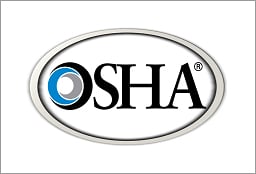 Late last year, we discussed the OSHA reporting changes for 2015. In addition to reporting, it’s also important to consider and plan for potential site visits when OSHA is contacted. The National Safety Council states that “reacting quickly to the incident with a prescribed procedure and actions can demonstrate your company’s commitment to safety. It also ensures the proper information is collected to fulfill an incident investigation’s ultimate purpose – to prevent future injuries.”
Late last year, we discussed the OSHA reporting changes for 2015. In addition to reporting, it’s also important to consider and plan for potential site visits when OSHA is contacted. The National Safety Council states that “reacting quickly to the incident with a prescribed procedure and actions can demonstrate your company’s commitment to safety. It also ensures the proper information is collected to fulfill an incident investigation’s ultimate purpose – to prevent future injuries.”
According to an article by Ogletree Deakins, employers are reporting more injuries than expected (particularly with regard to hospitalizations) and OSHA does not have the resources to inspect each incident. Instead, most Area Offices are asking employers to do the following:
- Conduct an incident investigation (Also known as Attachment A, this is a “non-mandatory investigative tool” that employers may complete in lieu of providing an incident investigation report. Employers are instructed to submit the information by a certain date or risk an immediate on-site inspection.)
- Document findings and send corrective actions to the relevant Area Office
- Post a copy of the letter where employees can readily review it
- Fax or email a copy of the signed Certificate of Posting (Also known as Attachment B) to the relevant Area Office
How should employers respond to these communications?
Ogletree Deakins recommends the best course of action is often to respond the same way an employer would respond to an OSHA complaint letter. The employer’s goal should be to show the incident was investigated and corrective measures were implemented. At the same time, the employer does not want OSHA to be interested enough to inspect the worksite. In addition, employers should be aware of potential civil liability issues.
Rather than using Attachment A, you may also consider submitting a letter briefly describing how you investigated the incident, exactly what happened, and what corrective steps were taken (i.e., retraining or fixes to equipment). The letter may be supplemented with the First Report of Injury (if you are in Wisconsin) or the OSHA 301 form and proof of corrective steps. Employers must recognize that OSHA does not provide assurances that it will not cite an employer on the basis of the information provided.
If you have additional questions or concerns, contact your knowledge broker at R&R Insurance!

